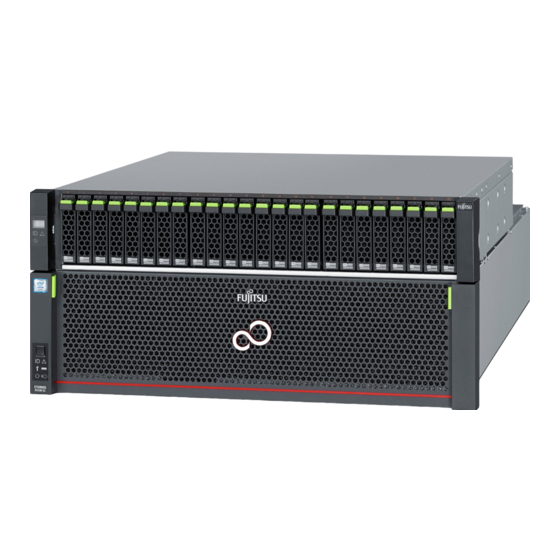Chapter 8
Setting the Multipaths
8.2
Multipath Configuration using Native Multipath
8.2
Multipath Configuration using Native Multipath
"Native Multipaths" is an OS function available for HP-UX11iv3 onwards.
Native Multipaths can be used to set the I/O load balance policy (load_bal_policy) and enable ALUA
(alua_enabled).
Perform these settings to match the ETERNUS DX model and depending on whether the OS supports ALUA.
8.2.1
Setting the I/O Load Balance Policy (load_bal_policy)
Set the I/O load balance policy to match the ETERNUS DX model being used as shown below. The policy set-
ting is required for all LUNs in the ETERNUS DX.
I/O load balance policy setting vs ETERNUS DX model
•
ETERNUS DX
DX60 S3/DX100 S3/DX200 S3,
DX500 S3/DX600 S3,
DX200F,
DX80 S2/DX90 S2,
DX400/DX400 S2 series,
DX8000/DX8000 S2 series
DX60/DX60 S2, DX80
Example procedure of I/O load balance policy setting
•
Setting the I/O load balance policy to "round_robin"
-
# scsimgr save_attr -D /dev/rdisk/disk25 -a load_bal_policy=round_robin
Execute this "load_bal_policy" setting command for all LUNs in the ETERNUS DX.
If the I/O load balance policy is "preferred_path", a priority path must be set. Set the path that is used
when the I/O load is balanced as the priority path.
•
Example procedure priority path setting
Specify the hardware path of the "Lunpath" that is to be the priority path.
-
# scsimgr save_attr -D /dev/rdisk/disk25 -a preferred_path=64000/0x0/0x0.0x0.0x4
000000000000000
Lunpath hardware paths can be checked using the "ioscan -m lun" and "scsimgr lun_map" commands.
FUJITSU Storage ETERNUS DX Configuration Guide -Server Connection- (iSCSI) for HP-UX
I/O load balance policy setting
round_robin
preferred_path
25
Copyright 2014 FUJITSU LIMITED
P3AM-3402-14ENZ0

